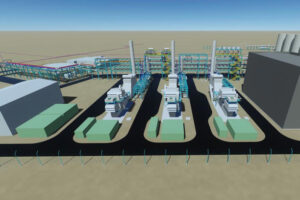The National Forest: 25 years on
It overcame the doubters to make its mark on the landscape, creating new jobs and reconnecting communities with woodlands in the process. John Everitt explains how The National Forest has become an exemplar for sustainable development
The National Forest is celebrating its first quarter century this year as a shining example of environmentally-led regeneration. This is quite a milestone for a place that 25 years ago simply did not exist. In this short space of time a new landscape, identity and economy has emerged across 200 square miles in the heart of England, covering parts of Staffordshire, Derbyshire and Leicestershire.
Selected by government in the early nineties and borne out of the then Countryside Commission, The National Forest has achieved a remarkable transformation with 8.5 million trees planted, forest cover increasing from an initial 6% to more than 20%, and a 48% increase in the value of the tourism economy. With mixed planting of predominantly native broadleaved species (some 89%), and more than 80% of new sites having public access, the result is the first major forest to be created in England for 1,000 years.
 The early years were a leap of faith; farmers needing support to become foresters, people doubting that this former-industrial landscape could become a tourist destination, and communities disengaged from a woodland culture. And yet, from these beginnings a national exemplar of sustainable development has emerged. It is hard to pin down the reasons behind this success, but a few key issues have undoubtedly been important.
The early years were a leap of faith; farmers needing support to become foresters, people doubting that this former-industrial landscape could become a tourist destination, and communities disengaged from a woodland culture. And yet, from these beginnings a national exemplar of sustainable development has emerged. It is hard to pin down the reasons behind this success, but a few key issues have undoubtedly been important.
Firstly, vision. The vision for The National Forest has been simple and focused; to regenerate a large landscape area through planting trees. Consistent funding from the Department for Environmental, Food and Rural Affairs (Defra) has been essential, as has commitment from successive governments to enable everyone to plan for the long term – 25 years isn’t long in forestry but it is an age in political terms. Having that clear vision has been vital in inspiring people to get behind the project.
Secondly, partnership. The approach taken from the start has been one of enabling partners to make things happen rather than to set up a large delivery body to take it on themselves. The National Forest Company was established in 1995 to coordinate effort and this approach has created genuine partnership, generating buy-in from all sectors and meant that The National Forest has developed because it is supported and relevant.
And thirdly, impact. The National Forest has always demonstrated real impact on the landscape, the economy and to people’s lives. This has been highly visible and has happened within a generation – the restoration of old mineral workings, new facilities for communities, or the establishment of new businesses – providing confidence that this vision can become a reality.

Sence Valley, Leicestershire, before foresting

Sence Valley after
Not surprisingly, local authorities have been particularly important partners in delivering the Forest. One of the most significant drivers has been the planning system, with more than 20% of the new forest created on the back of development and minerals planning. Forward-looking policies were agreed at an early stage by all the planning authorities, with an expectation that 20% of the land area of new developments should be given over to green infrastructure, and 30% if the development is more than 10 hectares in size.
Where planting cannot be accommodated within the development, the shortfall should support offsite planting of £20,000 per hectare through a commuted sum. This mechanism has not only helped to deliver new woodlands, but has driven up the quality of new developments, with benefits to the value of houses, access to greenspace and community pride.

Hicks Lodge, a former coal mining site near Ashby-del-la-Zouch. © Forestry Commission
People said it couldn’t be done in lowland England, but The National Forest continues to defy convention, pioneering new approaches and promoting innovation. The challenge of the next 25 years is to move from transformation to resilience, from creation to management. To do so will mean designing the next generation of public services to work hand in hand with the Forest, encouraging the next generation of businesses to create public benefit alongside jobs, and ensuring that the next generation who grow up in the Forest will value and engage with it.
Our vision for the Forest represents a positive view of the future in the face of uncertainty, whether that’s Brexit, climate change or housing growth. We would like to think this is a template for others to adopt, providing benefit to major infrastructure projects, post-industrial landscapes or even areas of green belt. The drawback you might think is cost, but what is breathtaking is that in 25 years, all of this has been achieved for the same cost to the public purse as building just two miles of your average three lane motorway – I would say that’s a pretty good return on investment.















